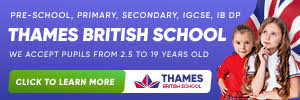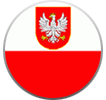On this page:

So let's not treat preschool as a place and a way to store a child for a few hours that we spend at work. What you enrol a child in is of great importance for their further development. In our article, Why is a good preschool so important?, we explain the importance of preschool education and discuss research clearly showing that choosing the right preschool, and not just the nearest one, is crucial.
There are various types of non-public and private preschools in Poland, each with very different approaches. These include Montessori, language, international, ecological, Waldorf (Steiner), Reggio Emilia, and religious preschools. Which one is right for you?
Parents, above all, seek high quality teaching, an interesting curriculum and, of course, that their child, in addition to play, learn independence, foreign languages, and social and interpersonal skills. In the past, neither public nor private preschools offered innovative teaching methods, but much has changed. Many new preschools are emerging with different and engaging programs
Types of preschools
In Poland, children are not obliged to attend preschool. Instead, they must complete an annual school preparation year called the “zero year.” For this reason, some children in Poland don’t attend preschool—they stay at home with their parents or guardians, or go to alternative facilities, such as kindergarten or toddler clubs.
The most popular types of preschools in Poland, apart from traditional ones, which don’t focus specifically on any educational approach, are Catholic, language, international, and ecological preschools. There are also artistic, music, sports, integrated, and combined preschools (e.g., language-artistic, music-language, etc.).
There are also preschools implementing alternative programs, such as Montessori, Waldorf, and Reggio Emilia (although there aren’t many Reggio preschools in Poland). In addition to alternative preschools, there are also Scandinavian and forest preschools.
Many preschools combine several approaches, drawing a little from each of them. Preschools differ from each other in many ways—the approach to learning, the amount of play time, goals, priorities, and rules, as well as the cost of tuition. These differences apply to both public and private preschools.
There are also some common features of preschools.
These common features include:
- supporting parents and guardians in care and upbringing,
- respecting children’s rights arising from the Convention on the Rights of the Child,
- Correct implementation of educational and teaching standards,
- ensuring children’s safety and protection,
- aiming at the comprehensive development of children,
- treating children with respect.
Methods used in preschools
Preschools are required to implement the preschool education core curriculum in accordance with the guidelines of the Ministry of National Education, based on the regulations adopted on February 14th, 2017 on the core curriculum for preschool and primary school.
Different preschools use different methods and approaches. These include, for example:
- developmental movement method of Veronica Sherbourne
- method Klanzy
- method of active listening to the music of Strauss
- functional method of teaching math of Edith Gruszczyk-Kolczyńska
- method of creative gymnastics of R. Laban
- d B Rocławski’s method of "Glottodidactics"
- good start method of M. Bogdanovich
- Paul Dennison's method
- C. Orff’s method
- Kniess
- Glen Doman’s method
- Creative thinking method of J. Osborne
Preschool programs
Choosing the right preschool for a child is very important. Preschool is a place where your child will spend a lot of time away from home—a place where she will not only develop, but also learn to work in a group and to make friends.
Montessori preschools
This kind of preschool program was initiated by Maria Montessori in the 20th century. It emphasizes the individuality of children and their development. Educators support children's creative activity and their individual development. In these preschools, classes take place in groups of children of different ages.
Older children learn responsibility, and younger children watch and learn from them. The child works by her own rhythm and can decide when and how quickly she will work, with guidance from the teacher. She doesn't have to hurry with tasks, so she doesn't feel pressure.
Kids learn responsibility and respect. In Montessori preschools, children also have at their disposal specialized materials that they can use during the day, such as button frames, coloured water in jugs, and laces. Moreover, they learn the basics of reading, writing, and math.
After the semester, every parent receives a special report on their child’s progress in education. Emphasis is placed on the development of knowledge and skills.
Children, in these preschools, can have fun, and develop and teach responsibility. They aren’t forced to do anything, they don’t have to catch up with other children while performing tasks, thanks to which their self-confidence develops free from competition. However, many parents are against this kind of preschool. Why? Some primary education teachers believe children come to school unprepared, and the rhythm of their work is much slower than children who came to school from traditional preschools, whether public or private.
Waldorf preschools
Waldorf schools were introduced by Rudolf Steiner, the creator of anthroposophy. Creating Waldorf preschools, he believed a child's individuality develops between the ages of five and six. He also claimed that children at this age need unrestrained fun, stimulating their emotional and physical development. This is a non-academic approach to learning.
In this preschool, there’s absolutely no division into age groups, similar to Montessori. There’s also no strict timetable.
The Waldorf teacher supports children’s development, appreciating their individual achievements and progress. There are also no toys in these preschools. They’re replaced by natural objects that stimulate children's imagination and teach them how to make something out of nothing. These items include chestnuts, wood, pine cones, and paper. Everything depends on the time of year and the supplies available. These supplies stimulate children’s imagination and develop their manual skills.
In Waldorf preschools, there is very little modern technology, such as TVs or computers. Most also don’t offer lessons in English.
Opponents of this preschool approach believe children come to school completely unprepared and have great difficulty catching up with the group.
Environmental preschools
These preschools have the same classes as traditional preschools. However, children learn to respect nature, live in harmony with it, and the basics of ecology. They also learn about the importance of animals in nature and why it’s worth taking care of greenery and not destroying it with excess garbage.
In the course of learning, the basics of recycling and interesting facts are learned, which show your child how to take care of the environment. In environmental preschools, plants are grown and animals are looked after. Trips to the forest are also frequent, and Earth Day is celebrated every year. In some of these preschools, the principles of a healthy diet are also learned, and physical activity is emphasized.
More and more parents are deciding to send their children to an environmental preschool. There, children naturally learn to read, write. and count, but everyday fun and classes are supplemented with ecological learning and activities that stimulate the imagination.
Art-focused preschools
This type of preschool is a fairly recent addition, and it has become a real hit. Exceptionally talented children can enjoy a large number of classes in acting, singing, and dancing. They are also given real audiences, which is why public performances are not a problem for them. People working in such preschools try to make the costumes sewn into the performances impressively with help from the children.
These preschools are a great start to the future for artistically gifted children. Classes are adapted to the age of children and their abilities, so that no child feels pressure. In preschools of this type, parents are often invited to watch their young children perform. Children also work in teams and on joint projects in art preschools.
Catholic preschools
There are many religious preschools in Poland, mainly Catholic ones, due to the fact that this is the largest religious group in Poland. They’re most often run by religious associations, churches, and religious communities. These preschools are primarily aimed at raising children in faith, instilling Christian values, physical, emotional, and intellectual development, and spiritual development. Besides that, these preschools don’t differ significantly from traditional ones—children take part in various types of music, art, movement, language, and many other classes and activities. There are also, for example, Catholic language preschools, where children learn one or more foreign languages, and Montessori Catholic preschools.
People who read this also viewed:
- Warsaw private schools
- Kraków private schools
- Poznań private schools
- Wrocław private schools
- Łódź private schools
- Rzeszów private schools
- Gdańsk & Gdynia private schools
-
Advice Guide
- ABC of educational terminology: Glossary of terms and concepts
- The admissions process
- Advantages and disadvantages of studying in an international school
- The application process
- Benefits of Polish private schools
- Bilingual schools
- Boarding schools
- Choosing a private or nonpublic school in Poland
- Compare schools in Poland
- English schools in Warsaw
- Homeschooling
- International schools in Kraków
- International schools
- Private school interviews
- Music education
- Myths about private education
- Non-public schools in Poland
- School open houses
- Our Kids Interview: Get to know EF Academy Oxford
- Our Kids Interview: Get to know Open School
- Our Kids interview: Get to know Regent College International Schools
- Our Kids Interview: Get to know The American School of Warsaw
- Our Kids Interview: Get to know The British School Warsaw
- Our Kids Interview: Get to know Wrocław Cosmopolitan School (two interviews, new video)
- Poland school profiles
- Private day schools
- Gifted schools & programs
- Private Jewish schools in Poland
- Language schools
- Private school tuition and costs in Poland
- Private schools in Poland
- Private schools in Poland offering French-language immersion
- English immersion schools
- Poland school uniforms
- Private special needs schools in Warsaw
- Public versus non-public schools in Poland
- Private school questions
- Private school rankings
- Reasons for choosing private schools - Our Kids’s survey report
- Religious schools
- Schools and classes for children with ADHD in Poland
- Social primary schools
- Social Schools
- Special educational needs (SPE) certificates
- Special needs schools
- Study abroad at a private school
- The first annual non-public school fair in Poland
- The first annual Our Kids non-public school expo in Warsaw was a great success
- Third Private School Expo in Warsaw - summary
- Types of schools
- Types of schools in Warsaw
- Warsaw preschool costs
- Why private school?
- Why parents go private
-
Grades
- Boarding high schools
- Choosing a high school in Poland
- Mokotow High School Campus - a new Warsaw high school and Thames British School campus
- Montessori nursery schools
- Montessori preschools
- Our Kids Interview: Get to know English Montessori School Katowice
- Our Kids Interview: Get to know FSA School
- Our Kids Interview: Get to know KIDS & Co.
- Our Kids Interview: Get to know Polish British Academy of Warsaw
- Our Kids Interview: Get to know The English Playhouse and The English Primary
- Poland education: grade levels
- Preschools in Warsaw
- Private & non-public preschools
- Private & non-public primary schools
- Private bilingual elementary schools in Warsaw
- Private high schools
- Private high schools in Warsaw
- Private middle schools
- Nursery schools
- Private primary schools in Warsaw
- Social high schools
-
Locations
- Boarding schools in Warsaw
- English schools in Kraków
- International Baccalaureate (IB) schools in Warsaw
- International schools in Warsaw
- Montessori schools in Warsaw
- Non-public schools in Warsaw
- Our Kids Interview: Get to know EF Academy
- Our Kids interview: Get to know Excellence in Education better
- Our Kids Interview: Get to know PRIMUS Non-Public Primary School No. 47 and Non-Public Secondary School
- Our Kids Interview: Get to know the Canadian School of Warsaw
- Our Kids Interview: Get to know The Primary and Secondary Schools of the Sisters of Nazareth in Warsaw
- Private Catholic and Christian schools in Warsaw
- Private day schools in Warsaw
- Private language schools in Warsaw
- Private schools in Bialystok
- Bydgoszcz schools
- Częstochowa schools
- Private schools in Gdańsk & Gdynia
- Katowice schools
- Private schools in Krakow
- Lublin schools
- Olsztyn schools
- Private schools in Poznań
- Private schools in Rzeszów
- Szczecin schools
- Private schools Warsaw
- Private schools in Wrocław
- Zielona Góra schools
- Private schools in Łódź






 POL
POL CAN
CAN